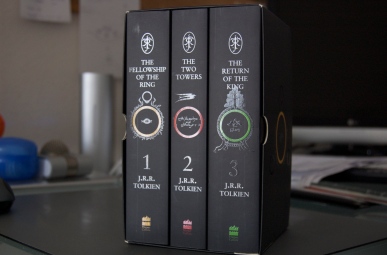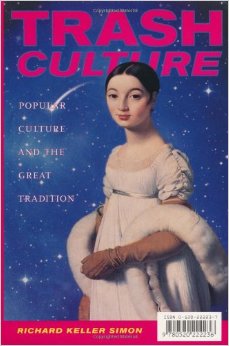By Siobhan Lyons, PhD Candidate
Department of Media, Music, Communication and Cultural Studies
Faculty of Arts
Macquarie University
Sydney, Australia
“For many years, until I wrote my first book, The Mechanical Bride, I adopted an extremely moralistic approach to all environmental technology. I loathed machinery, I abominated cities, I equated the Industrial Revolution with original sin and mass media with the Fall. In short, I rejected almost every element of modern life in favor of a Rousseauvian utopianism. But gradually I perceived how sterile and useless this attitude was, and I began to realize that the greatest artists of the 20th Century–Yeats, Pound. Joyce, Eliot–had discovered a totally different approach, based on the identity of the processes of cognition and creation. I realized that artistic creation is the playback of ordinary experience–from trash to treasures. I ceased being a moralist and became a student.”
-Marshall McLuhan, Playboy Magazine, March 1969

An Intro to Trash
The above is an excerpt from famed media scholar Marshall McLuhan, in an interview with Playboy magazine. His notion that artistic creation is the playback of ordinary experiences, from trash to treasure, shows the theorists’ own perception of where art comes from. Moreover, McLuhan himself can be described as transgressing the ordinary boundaries of art—appearing in Woody Allen’s classic Annie Hall, being alluded to several times in hit HBO program The Sopranos, and of course, being interviewed in Playboy magazine, as authors Anthony Burgess, Graham Greene and Vladimir Nabokov have also, already disrupting the conventions set up around high and low brow forms of culture.
Trash Culture is an elusive concept, and does not conform to one particular cultural group or categorisation, which is why, then, it proves to be an intriguing concept. More than popular culture, trash culture carries with it certain cultural and societal definitions and assumptions, all of which are subjective, though undeniably unfavourable.  But it changes and adapts. J.R.R. Tolkien’s famous epic series The Lord of the Rings was considered ‘juvenile trash’ when first published (Sandbrook, 2015), but has gone on to be included on various ‘greatest works of literature’ lists, and is now considered essential reading for most youngsters.
But it changes and adapts. J.R.R. Tolkien’s famous epic series The Lord of the Rings was considered ‘juvenile trash’ when first published (Sandbrook, 2015), but has gone on to be included on various ‘greatest works of literature’ lists, and is now considered essential reading for most youngsters.
Trash touches each and every aspect of culture; from music to fashion and literature to philosophy. Anybody who has read or is familiar with Roland Barthes’ Mythologies (1957), for instance, will appreciate the merging of theory and trash in such essays as ‘The World of Wrestling’ and ‘Toys’, in which Barthes shows how useful these so-called ‘trashy’ elements are in society. Theorist Susan Sontag, too, was known for her embrace of pop culture, keen to shatter the ‘false divide between pop culture and “high” culture’ (Popova). Stravens, moreover, argues that Sontag embraced ‘certain forms of pop culture as simply another turn of the avant-garde’, and ‘embraced mass culture at the same moment that she was embracing the French nouveau roman’ (283). Objects seen as belonging to separate ‘fields’ are therefore considered, by some, to exist on the same plane of cultural existence, with trashy mass market paperbacks coexisting on the same bookshelf with Tolstoy or Nietzsche. The assumption that trash cannot function alongside high art is perhaps this century’s greatest myth.
What is Trash Culture?
But what exactly constitutes trash culture? As a theme or issue, it is relatively under-explored in both academic and everyday criticism. Richard Keller Simon’s book Trash Culture: Popular Culture and the Great Tradition (1999)  is one of the primary texts concerning the dynamics of trash culture. ‘The relationship between great books and popular entertainment’, he notes, ‘is important and worth examining carefully. What really is the difference between trash culture and the great tradition? Why is The National Enquirer so bad and a tragedy by Euripides so good?’ (2).
is one of the primary texts concerning the dynamics of trash culture. ‘The relationship between great books and popular entertainment’, he notes, ‘is important and worth examining carefully. What really is the difference between trash culture and the great tradition? Why is The National Enquirer so bad and a tragedy by Euripides so good?’ (2).
For Keller, the difference between trash culture and high culture is in storytelling methods, with Dumb and Dumber standing in for Cervantes’ Don Quixote, Clueless a retelling of Jane Austen’s Emma, and Rambo a revision of the Greek classic The Iliad. And then there is Star Wars, perhaps the most notable creation to be considered trashy, whose narrative is taken from Joseph Campbell’s The Hero with a Thousand Faces, and in many respects is considered a retelling of The Bible. Trash, then, appears to be linked to a deviation from an original. Considered an inferior product, it gleefully repeats, becoming what philosopher Gilles Deleuze calls ‘difference within repetition’.
Indeed, the issue goes beyond mere class and elitism, and extends towards anything from medium to aesthetics. The revamped version of classic stories supposedly affronts the integrity of the original, making the familiar strange in the process.
Moritz BaBler argues that: ‘the aesthetics of Trash can either appreciate the Die Hard movies starring Bruce Willis or the disco world of John Travolta’s Saturday Night Fever directly or mediated’ (32). For Vexen Crabtree, trash culture features ‘Cheap thrills, shock, brainless action, explosions’, with ‘no concentration or depth required’. This is what separates trash from the popular: its apparent absence of any redeeming intellectual quality. Yet this is also where a supposed contradiction emerges, as many highly intellectual figures profess their love of trash.  As Sontag herself once noted, she should not have to choose between The Doors and Dostoevsky: ‘I am for a pluralistic, polymorphous culture’.
As Sontag herself once noted, she should not have to choose between The Doors and Dostoevsky: ‘I am for a pluralistic, polymorphous culture’.
The simple pleasure of zoning out, long considered a negative trait of humans, is seen to be beneficial for the brain. According to Lucia Peters, science backs up the benefits of mindlessness, saying: ‘Simply put? It’s an excellent way for you mind to solve problems in less conventional ways’ (2015). Evolutionary speaking, temporarily removing the need for in-depth concentration allows the brain to formulate ideas that would not otherwise form. It also gives the brain a much-needed chance to relax, making Trash enormously beneficial in the process.
There is, of course, the simple notion that anything trashy is that which appeals to the masses. But why is this considered such a bad thing? If some medium or story is appreciated on a wide scale, why does this translate as problematic? For theorist Raymond Williams, writing in 1961, the issue is simply that mass appeal translates as the declining quality of the medium itself.

Discussing the notion of a mass public in relation to literature, he writes: ‘On the one hand there is the fear that as the circle of readers extends, standards will decline, and literature be threatened by “blotterature”. Related to this, but involving other prejudices, has been an essentially political fear that, if the common man reads, both quality and order (sometimes the one standing for the other) will be threatened’ (179).
We associate trash culture with more recent decades, but even in the Victorian era, trash was affiliated with the widespread dissemination of books, previously reserved for a minor elite. Famous figures such as Charles Dickens and Mark Twain may have been celebrated for their focus on the working class, but ultimately they were derided by arbiters of taste who were keen to keep literature out of the hands of the lower classes. As Lisa Rodensky argues: ‘Reviewers note – both to praise and to blame – that Dickens’s novels reproduce the language of the lower classes’ (584). She explains:
Set against this cluster of meanings are those circulating in the reviews that relegate the popular to the lowest common denominator, a category of mass-produced novel and novelist that better classes of readers should resist for many reasons, among them the suspicion that a work which attracts so many readers will degrade them, make them part of a manipulated and undifferentiated mass reading public (584).
The issue then becomes about individuality, or what we may understand as the myth of individuality, and the desire to be differentiated from others, in which products and entertainment that is widely consumed makes us all the same. The more unique and obscure the product, seemingly the more unique we become. Because trash is unapologetically repetitive, it is seen to contribute to this dreaded system. Yet when it comes to choice of entertainment and consumerism, there is little difference between choosing between a pop singer such as Britney Spears and the more obscure Tom Waits. Why? Because according to Theodor Adorno and Max Horkheimer, the products and entertainment we choose to define ourselves by actually say nothing meaningful about us at all. Indeed, they note that ‘something is provided for all so that none escape’. Rather than resisting the system, then, it becomes important to understand the benefits of trash and the place it has in society. Or, as Sontag argued, we may not have to choose between trash and ‘serious’ products at all: ‘There are contradictory impulses in everything’, she stated. Hence Star Wars novels such as The Courtship of Princess Leia may in fact go hand in hand with even the most complex Dostoevsky, without any threat to perceived ‘established’ categories of cultural acceptance.
Learning to Embrace Trash
At this point it seems only necessary to point out that there is, of course, a distinction set up between Popular Culture and Trash Culture. Yet this distinction is replete with confusion and inconsistencies. While television programs such as The Sopranos, Breaking Bad, Buffy the Vampire Slayer are, arguably, a part of high popular culture, reality television talk shows reside firmly within the area of trash culture.
One the website Human Truth, blogger Vexen Crabtree distinguishes between popular and trash culture:
There is a distinct difference between popular and trash culture. In many countries, the things that are massively popular are not intrinsically trashy. It is not essential that the most liked music has to be the most shallow music, nor that the most bought newspapers have to be the most absurd. The UK in particular has a popular culture that is very dumbed-down, but it has not always been like that (2001).
In many instances, trash exists as a form of social anarchy, as seen in the British television program The Young Ones, and undoubtedly many others. Therefore, there is no one understanding of trash, though it has a pivotal role to play in shaping the cultural values of society.
The difference between popular and trash culture, then, is about its very approach; popular culture from Seinfeld to Twin Peaks contributes something intelligent and artistic, even if it appeals to elements as seemingly ‘crude’ as humour and sex. Trash culture is purposefully vulgar and sees the value in momentary mindlessness. A simple ‘Google images’ search gives a good indication of the aesthetics of trash: crude, colourful, and kitschy. Images of vibrant colours and outlandish appearances. It also involves images of sex and the body, the body transformed, alien, strange.
Returning to the beginning of this essay, Marshall McLuhan, whose perhaps most famous for his declaration that ‘the medium is the message’, becomes a useful figure in examining trash culture. His focus on how the medium itself, rather than the actual content, is useful insofar as we can see how moments in time and culture have been shaped by changing mediums.
The twentieth century, as Charlie Anders notes, was seen as the first wave of trash culture: ‘An era where there were a lot of 25 cent paperbacks with gun-toting lesbians on their covers, plus drive-in movies, stag films, cheap comics and weird burlesque shows’. Australian rock musician Dave Graney similarly celebrated the now respected genre of pulp fiction on Jennifer Byrne Presents: ‘The pulp world is very good because it was like 10 cent books for people. It was trash. It wasn’t coming through some critical avenue towards people. People just picked it up.
It was written for money. There was [sic] a lot of great characters in it’ (2011).
But Anders declares that we are currently living in the golden age of trash, and that the changing mechanisms of media in the 2010s exemplifies this celebration of trash:
Why is 2012 the best time ever to love pulp trash? Because we’re witnessing two things: the death spasms of old media, and the unruly birth of new media, at the same time. And both of these phenomena are unloading huge bounties of trash. You’re lucky to be alive at a time like this.
Trash therefore becomes about experimentalism as a response to change. In the twentieth century, trash culture responded to the changes to literature, witnessing the birth of the magazine, the comic book, a new era which produced outlandish images. Now those very same mediums are changing and adapting, and the elusive space left over is where the experimentalism of trash finds its footing. The leftovers, the detritus, the excessive waste: these are the things that trash celebrates.
References
Anders, Charlie Jane. ‘Are we living in the Golden Age of Trash Culture right now?’ io9. December 6, 2012 http://io9.gizmodo.com/5917853/are-we-living-in-the-golden-age-of-trash-culture-right-now
Moritz BaBler. ‘New Standards of Beauty and Style and Taste: Expanding the Concept of Camp’. Quote, Double Quote: Aesthetics between High and Popular Culture. Paul Ferstl and Keyvan Sarkhosh (eds.). Amsterdam, New York: Rodopi, 2005, pp. 23-43
Crabtree, Vexen. ‘Western Culture: Trash and Popular Culture, Elitism and Multiculturalism’. Human Truth. September 9, 2001. http://www.humantruth.info/culture.html
Lucia Peters. ‘Zoning Out Is Good For You, Says Science, So Go Ahead And Let Your Mind Wander Today’. Bustle, August 8, 2015, http://www.bustle.com/articles/102828-zoning-out-is-good-for-you-says-science-so-go-ahead-and-let-your-mind-wander
Popova, Maria. ‘Susan Sontag on How the False Divide Between Pop Culture and “High” Culture Limits Us’. Brain Pickings. https://www.brainpickings.org/2013/11/11/susan-sontag-the-complete-rolling-stone-interview-1/
Rodensky, Lisa. ‘Popular Dickens’, Victorian Literature and Culture (2009), Vol. 37, 2009, pp. 583–607
Sandbrook, Daniel. ‘Did Tolkien Write Juvenile Trash?’ December 17, 2015. BBC Culture. http://www.bbc.com/culture/story/20151215-did-tolkien-write-juvenile-trash
Simon, Richard Keller. Trash Culture: Popular Culture and the Great Tradition. Berkeley, Los Angeles, London: University of California Press. 1999.
Stravens, Ilan. Singer’s Typewriter and Mine: Reflections on Jewish Culture. Lincoln and London: University of Nebraska Press. 2012.
Williams. Raymond. The Long Revolution, Harmondsworth: Pelican Books, 1975.
Television
‘Jennifer Byrne Presents: Cult Books’, March 15, 2011, ABC http://www.abc.net.au/tv/firsttuesday/s2815885.htm



Reblogged this on Lion and the Hunter- Siobhan Lyons.
LikeLike